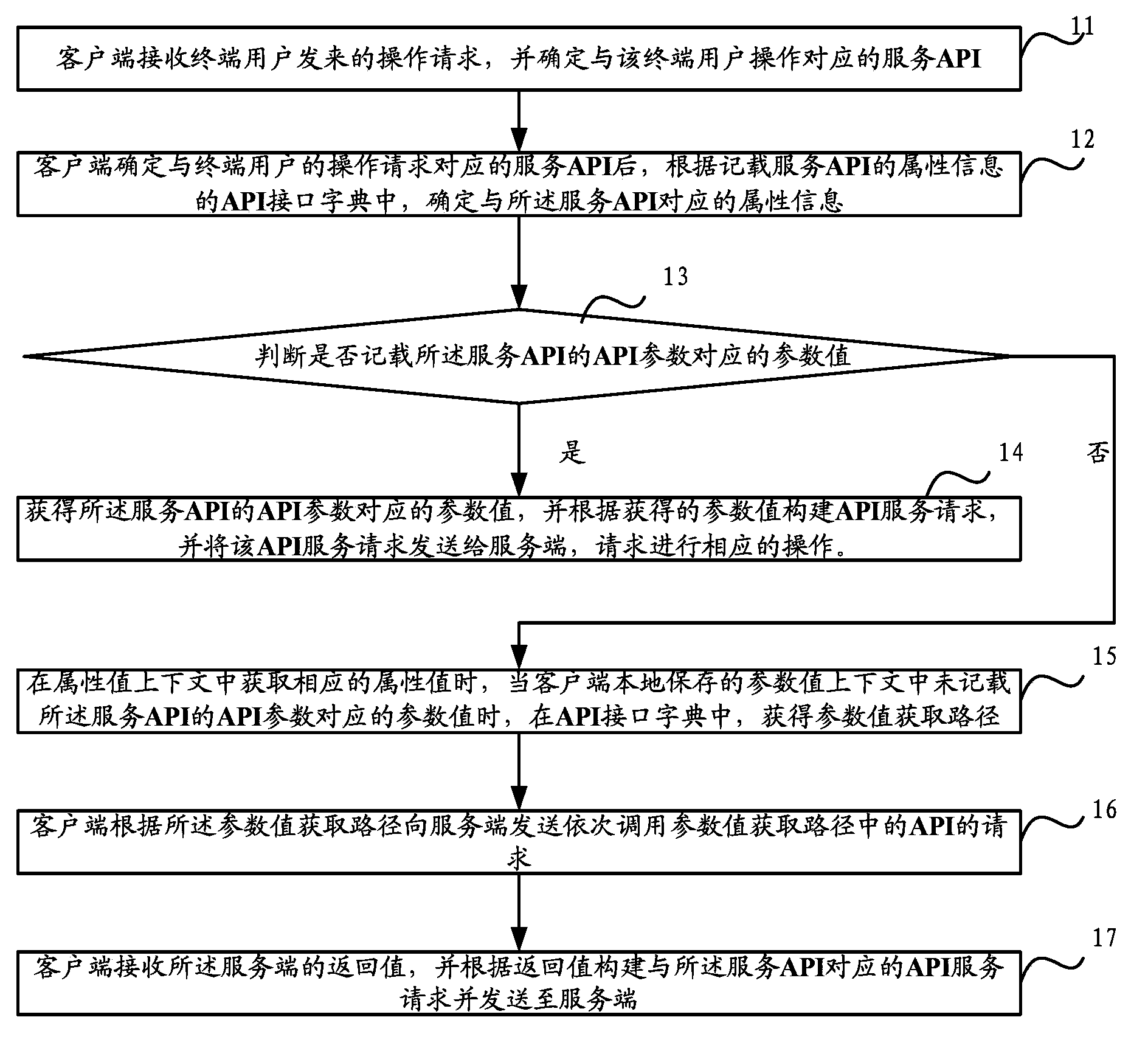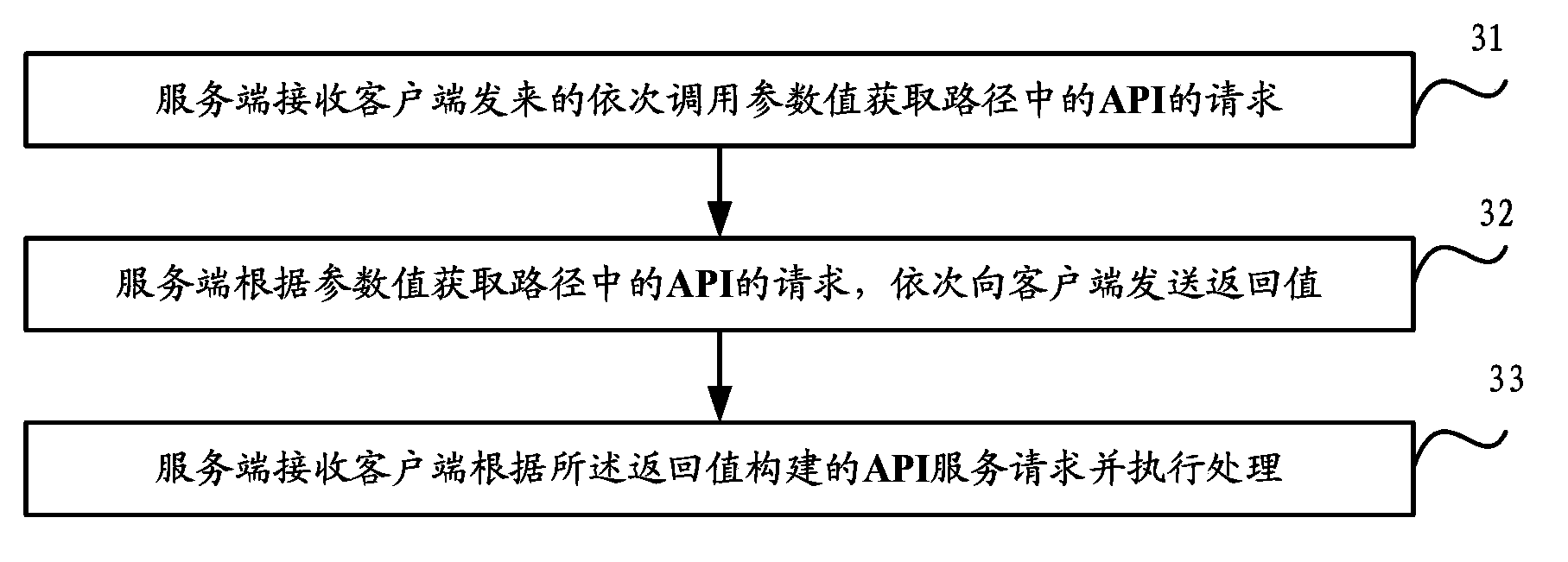API-based method for sending and receiving information, API-based apparatus, and API-based system
A technology for sending information and API interface, which is applied in the field of information processing and can solve the problems of client request failure, occupation, and the limited ability of the terminal to run the client.
- Summary
- Abstract
- Description
- Claims
- Application Information
AI Technical Summary
Problems solved by technology
Method used
Image
Examples
Embodiment 1
[0026] Embodiment 1 of this application proposes a method for sending information based on API, such as figure 1 As shown, the specific process is as follows:
[0027] Step 11, the client receives the operation request sent by the terminal user, and determines the service API corresponding to the terminal user's operation.
[0028] Wherein, the terminal user activates the client terminal installed in the mobile terminal through operations, and after the client terminal is activated, the terminal user operates the client terminal to initiate an operation instruction.
[0029] Step 12: After determining the service API corresponding to the terminal user's operation request, the client determines the attribute information corresponding to the service API according to the API interface dictionary that records the attribute information of the service API.
[0030] Wherein, the API interface dictionary records attribute information of the service API. The API interface dictionary ...
Embodiment 2
[0062] Embodiment 2 of this application proposes a method for receiving information based on API, such as image 3 As shown, the specific process is as follows:
[0063] Step 31, the server receives requests from the client to call APIs in the parameter value acquisition path in sequence.
[0064] Among them, when the client determines that the parameter value corresponding to the API parameter of the service API is not recorded in the context of the locally saved parameter value, it will sequentially call the parameters in the parameter value acquisition path according to the API interface dictionary that records the attribute information of the service API. For an API request, the attribute information includes API parameters and their parameter value acquisition path, and the parameter value acquisition path includes the calling sequence of one or more service APIs.
[0065] Step 32, the server obtains the API requests in the path according to the parameter value, and send...
Embodiment 3
[0080] Furthermore, Embodiment 3 of the present application here is based on the above-mentioned Embodiment 1 and Embodiment 2, and takes the client sending information based on the API and the server receiving information based on the API as a whole process to elaborate on the process proposed here in this application. API-based methods for sending and receiving information, such as Figure 5 As shown, the embodiment of the present application here proposes an API-based system, the system includes a client and a server, wherein:
[0081] The client is installed in a terminal, such as a mobile terminal, or a network terminal, etc. It is used to determine the service API corresponding to the operation request of the end user; according to the API interface dictionary recording the attribute information of the service API, determine the attribute information corresponding to the service API, and the attribute information includes API parameters and parameter value acquisition pa...
PUM
 Login to View More
Login to View More Abstract
Description
Claims
Application Information
 Login to View More
Login to View More - R&D
- Intellectual Property
- Life Sciences
- Materials
- Tech Scout
- Unparalleled Data Quality
- Higher Quality Content
- 60% Fewer Hallucinations
Browse by: Latest US Patents, China's latest patents, Technical Efficacy Thesaurus, Application Domain, Technology Topic, Popular Technical Reports.
© 2025 PatSnap. All rights reserved.Legal|Privacy policy|Modern Slavery Act Transparency Statement|Sitemap|About US| Contact US: help@patsnap.com



